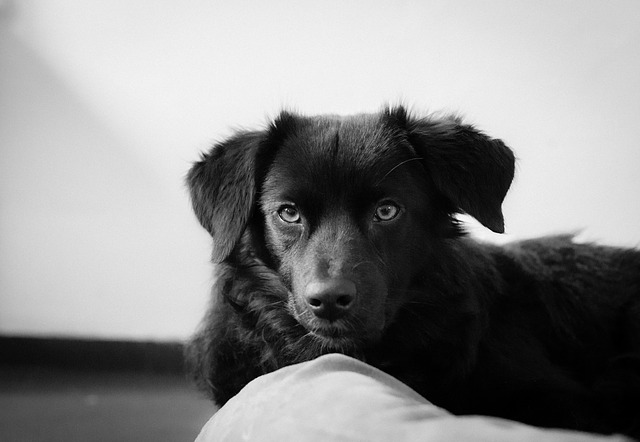
If you know anything about separation anxiety, you know how upsetting it can be for the dog and how frustrating it can be for the owner. But what causes it? Does knowing what may have caused your dog’s separation anxiety help you treat it? Are there certain dog breeds that are more likely to develop separation anxiety? There are a wide variety of factors that can lead to a dog developing separation anxiety. Scientists may not understand all the factors that can cause separation anxiety, but here’s what they do know.

What factors lead to separation anxiety?
Did you know that up to 30% of dogs will suffer some degree of separation anxiety at some point in their lives? That’s because there are a lot of things that can lead to it. A few contributing factors include:
#1 – Genetics
Dog breeds that were bred for either companionship or to accompany their owners all day long on herding or hunting jobs are genetically more predisposed to suffer from separation anxiety. Vizslas, for example, were bred to be gundogs. They’re nicknamed “Velcro dogs” because they like to be right next to their human all day long. Is it all that surprising that they would react poorly to being alone?
#2 – Early trauma
A dog who doesn’t have a good start in life is naturally going to have a more nervous disposition than a dog who had the perfect puppyhood, so a dog who experienced trauma early in their life is more likely to develop separation anxiety.
#3 – Abandonment
Dogs who are rescued or adopted are much more likely to suffer from separation anxiety than dogs who’ve been in the same home since they were very young. This makes sense. How can you possibly convince your dog that they won’t be ripped from their home again? Every time you leave home, your dog is probably worried that you’re never coming back.

#4 – Being taken from their mom too soon
The first eight weeks of a puppy’s life are crucial for them to develop a sense of trust in the world. If they’re taken from their mother before they are quite ready to take on the world, they will be less emotionally equipped to be left alone.
#5 – Long periods of separation
If you work eight hours a day with a one-hour lunch break and a half hour commute each direction, your dog is alone for 10 hours a day. Dogs don’t have the same sense of time that we do, so 10 hours a day, five days a week, plus the occasional weeknight or weekend outing must feel to your dog like he is spending an eternity alone.
#6 – Big changes
Has your oldest child recently gone off to college? Have you recently gone through a breakup, and your partner has moved out of the house? Is your spouse in the military and has recently left on deployment? Your dog won’t understand these changes and is likely to be upset about it. He won’t understand why somebody left one day and never came back (or stayed away for weeks or months at a time).

#7 – Cognitive decline
Dogs can develop dementia just like humans. As their mental status declines, older dogs may suddenly realize they are alone and not understand why or how long they will be alone.
#8 – Lack of stimulation
Some of the most intelligent dog breeds are the most likely to develop separation anxiety. Border Collies and Australian Shepherds were bred to work in the fields all day long herding sheep under the instructions of their human. Without that, they can become destructive trying to find ways to keep their mind and body active. This may indicate boredom more than anxiety, but that boredom can certainly turn into anxiety if it’s not remedied.
#9 – Clinginess
Labs and Goldens make great family dogs because they LOVE their people. Unfortunately, this also makes them more likely to develop separation anxiety because they just don’t know what to do with themselves when their favorite person isn’t around.

What can you do to help?
Moderate to severe separation anxiety can be difficult to treat and may require the help of a dog trainer who specializes in separation anxiety and maybe even medication. Luckily, mild cases of separation anxiety may be alleviated with a few simple changes.
#1 – Don’t make a big deal out of coming or going
Don’t turn your leaving or coming home into an event. Leave your dog calmly like it’s no big deal, and ignore his hyperactive welcome when you come home. Rewarding him with attention when you first walk in the door causes him to look forward to your arrival even more, which can make the anxiety worse. Wait until he’s calmed down before acknowledging him.
#2 – Make sure your dog gets plenty of exercise
A tired dog is less likely to become upset than one that has too much energy. Take your dog for a long walk before you leave to help wear him out and focus on burning off his energy when you are home.

#3 – Give him something to do when you’re gone
Giving your dog a puzzle toy, a toy stuffed with peanut butter, a bully stick, or some other treat or toy that he only gets when you leave can help him look forward to you leaving instead of dreading it. Keep in mind that you don’t want to leave your dog home alone with a choking hazard, so be sure to observe your dog with any new treat or toy before deciding that it’s safe to leave him alone with it.
#4 – Try doggy daycare or a pet sitter
Eight to ten hours is a really long time to be home alone with little to do. If you can’t get home on your lunch break, consider taking your dog to doggy daycare or hiring a pet sitter (or bribing a friend) to walk and play with your dog in the middle of the day to break up the monotony.
#5 – Take up a new sport
Trying a dog sport with your fur child such as agility, earth dog, or flyball will help engage your dog’s mind and body while you’re around, which can help alleviate the boredom and excess energy he would otherwise experience when you’re alone. Dogs love to learn and please you, so use that to your advantage.
(H/T: Viral Nova, Honest To Paws, Wide Open Pets, Small Dog Place)